Feed Me, Seymour
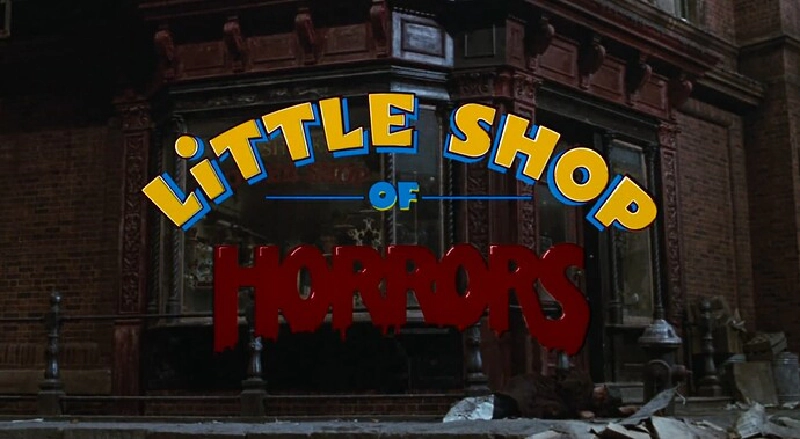
the parade of musicals-i-havent-seen-yet continues…
We open on a motown greek chorus!
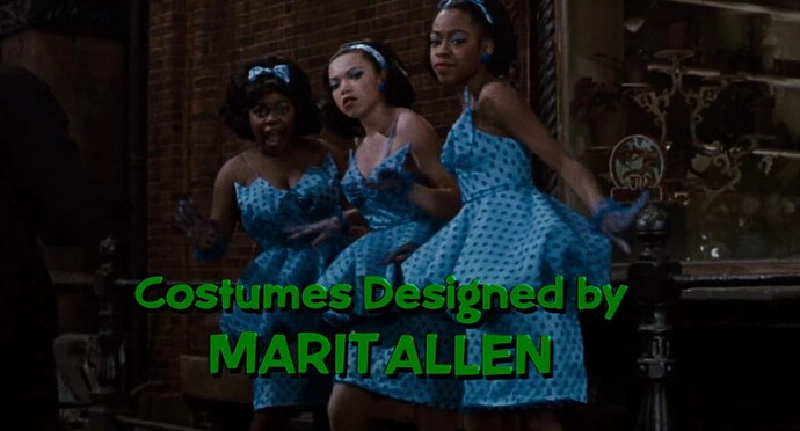
That’s a move. I can count on one hand the number of musicals I’ve watched that actually feature a Greek chrous and the one that most memorably did had the distinction of being a story about Greeks.

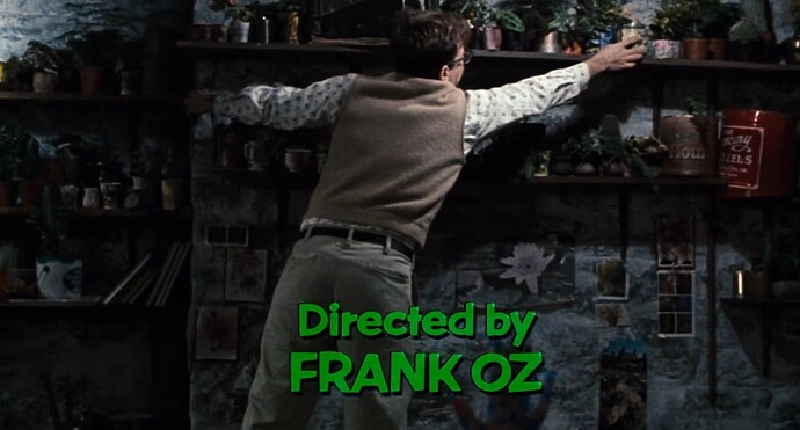
Oh hey, it’s directed by Miss Piggy!
The main antagonist of Little Shop of Horrors is a big puppet, in 1986 you’re going to need an Acolyte of the Cult of Jim Henson on board to make that work.
This is based on an off-broadway musical, where presumably the puppeting was done live.
It’s also - unlike The Producers(2005) - a pretty successful adaptation of a stage musical, which it achieves by virtue of leaning in to the cartooniness and weirdness of its source material.
Some reviews of Hello Dolly mentioned how cartoonish and simple the characters were, but… oh boy, it’s got nothing on Little Shop of Horrors, which goes very cartoonish and simple for its characters.
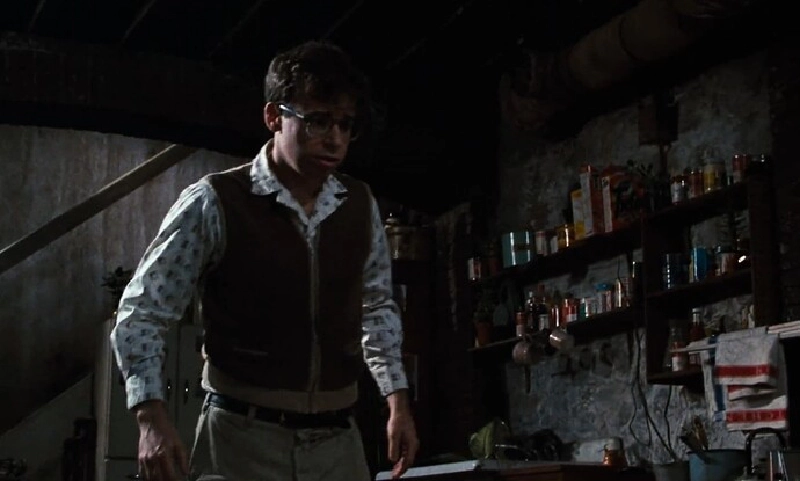 Seymour is a clumsy, put-upon nerd.
Seymour is a clumsy, put-upon nerd.
 Audrey is … a Betty Boop, which is … just a weird thing from the past that I’m glad died.
Audrey is … a Betty Boop, which is … just a weird thing from the past that I’m glad died.
You know, a high-pitched, naive, sexy idiot.
And finally, Mr. Mushkin is …
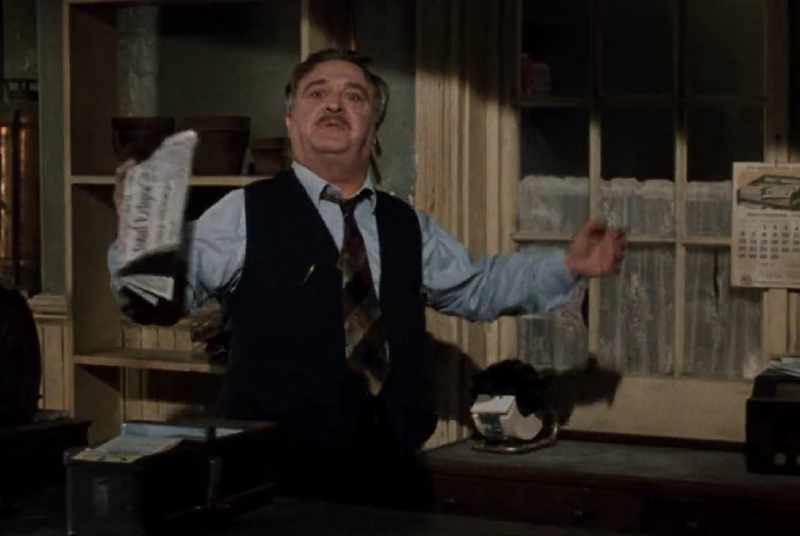
Another weird thing from the past I’m glad we don’t see in media anymore, a cheap greedy old jewish man. A Shylock.
And that’s our three primary characters, most of them ugly, cartoonish stereotypes.
Mr. Mushkin yells at some black kids (portrayed by full-grown adults) who are loitering outside of his business, which doesn’t do much to clear the “ugly racial stereotypes” taste out of one’s mouth.
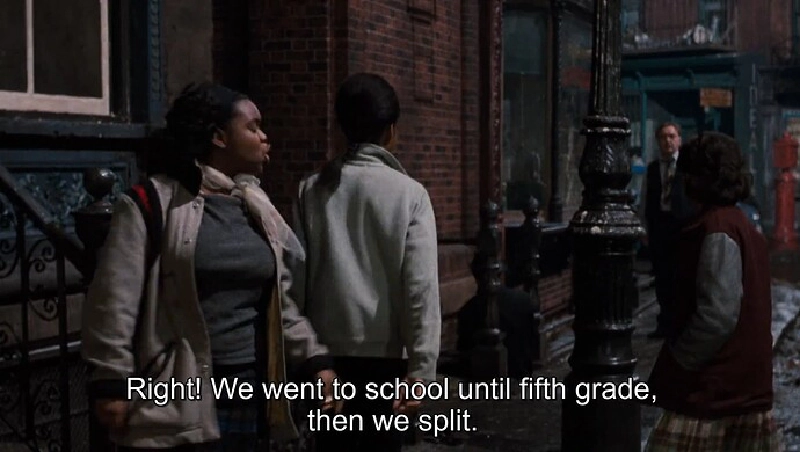
The next 20 minutes is all set-up, using some doo-wop songs to establish:
- The shop is poor, and in a bad part of town, and nobody wants to buy flowers here.
- Seymour quietly pines for Audrey.
- Seymour puts an unusual plant (a plant that he found during a to-tal eclipse of the sun, which he names Audrey II) in the window, which attracts attention and money.
- Immediately, people start coming in and buying things, but the plant is dying!
- Seymour discovers, by cutting himself on a rose, that the plant craves human blood.
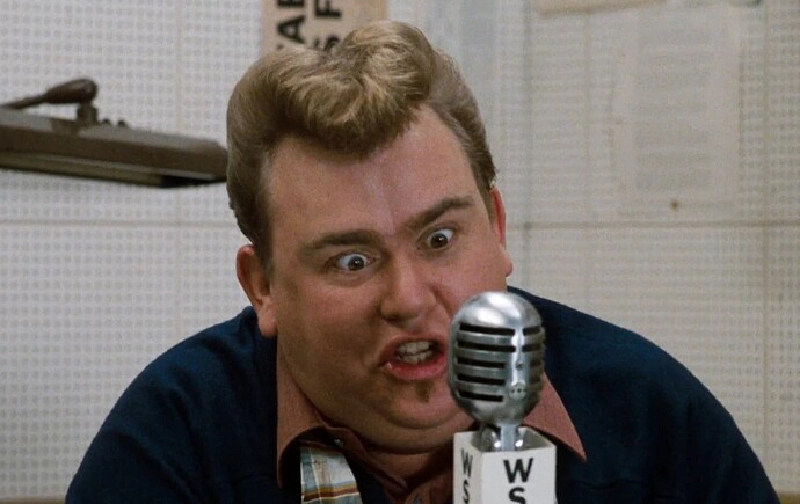
hey, John Candy cameo!
After that, the street kids confront Audrey, who is nursing a fresh injury from her abusive boyfriend (hitherto unseen): why date someone who keeps hurting you? Why not date Seymour instead?
She likes the idea but she’s too afraid of her boyfriend to leave him, and sings a song about how happy she’d be with Seymour, Somewhere that’s Green.
Somewhere that’s Green is very good. Audrey’s dreams are really small, and that’s a good joke, and really sad: she dreams of not being hit and moving out of the city to a lower-middle class life with a real chain link fence and putting plastic on her furniture.

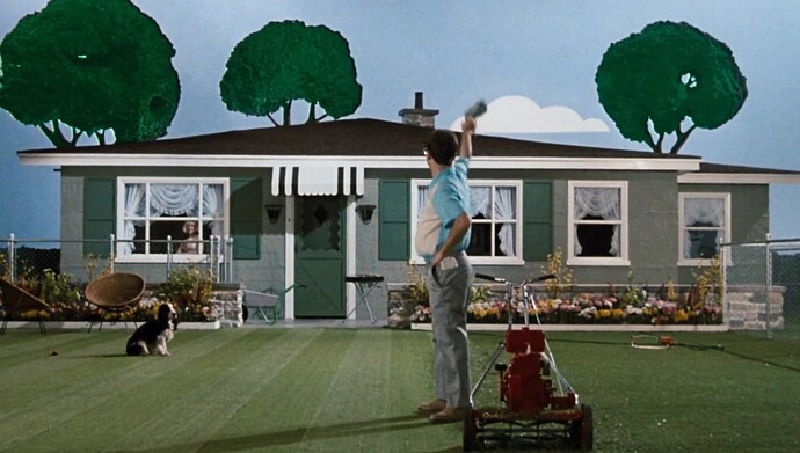
There’s something so weirdly charming about someone singing an “I want” song about something so mundane.

The other thing that’s noticeable about this song is that… it’s Part of Your World. Holy shit, whatever hack wrote the songs for The Little Mermaid just… fully stole this song and made it about mermaids.
I wonder if the guy who wrote Something that’s Green ever got the credit for that.

oh, heh
same guy both times
Well I guess it’s okay for Alan Menken to rip off Alan Menken.
I also discovered that there’s a bit of a cottage industry on YouTube where people just sing both songs side-by-side because they’re so similar.
Okay, okay, so what’s the problem? Why can’t Audrey be with Seymour? Who’s this boyfriend who’s so scary that he’s holding up the whole plot?
And, even worse, he’s the nastiest kind of creature alive:
a Steve Martin!
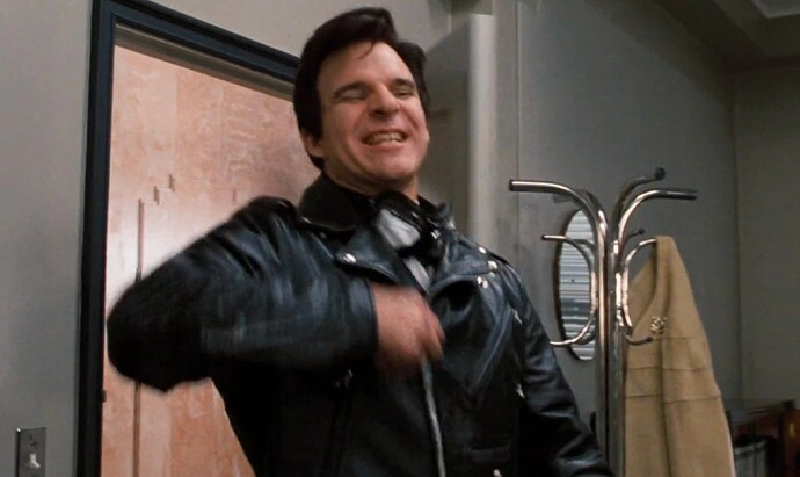
wait, I mean
a dentist!
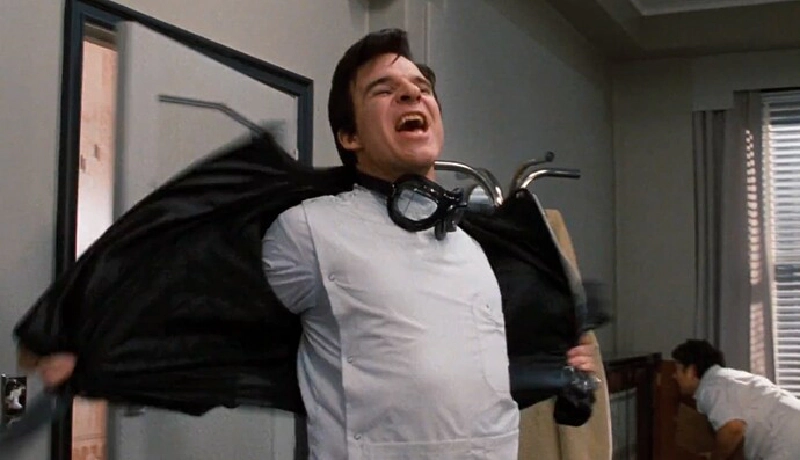
That’s a solid visual gag: the fact that he’s a dentist is kept from you for a good bit until you get to the reveal, the punchline: a dentist.
He’s a relatively bit part in this play, but the character has become notorious and something of a fan favorite: the dentist who’s literally a sadist, who sings about how happy it makes him to hurt people.
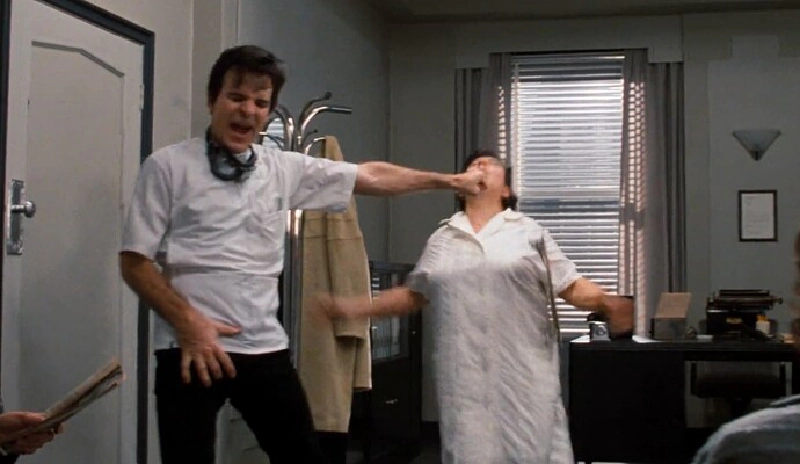
Which is funny, I think it’s fine but I never find Steve Martin that funny.
Okay, so, the plant has grown big and strong off of scraps of Seymour’s blood, but now it can talk - with the booming motown voice of Levi Stubbs. “FEED ME, SEYMOUR!”.

Grow For Me, Feed Me (Git It), and Suppertime are all forgettable songs about putting people into that plant that happen at one point or another in this movie and they’re all pretty interchangeable.
This musical was originally written in 1982, only 2 years after Sweeney Todd: The Demon Barber of Fleet Street, so apparently the early 80’s were a real sweet spot for musical theatre about eating people. Who knew?
The plant smooth-talks Seymour into doing a murder on his behalf: obviously the world would be a better place without the dentist, and the Audrey 2 craze is going to make Seymour rich, and famous!
So Seymour sets off with a little snub-nosed pistol to go murder the dentist, but not before we get a scene where … Bill Murray shows up for a dental appointment.
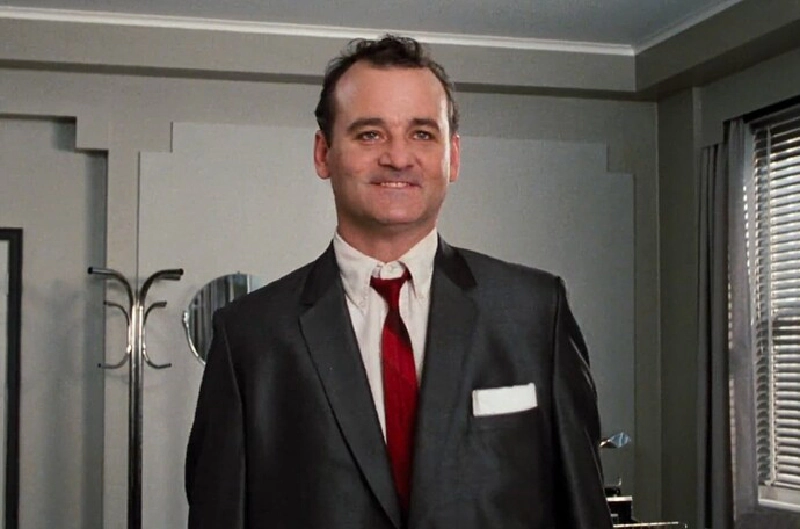
Bill Murray plays a masochist who’s way, way in to dental work.

This is legitimately a very funny scene. It doesn’t advance the plot at all, but Bill Murray’s excited masochist is good. The dentist finds this man’s enjoyment deeply frustrating and intends to take it out on Seymour.

but not without some nitrous - but not for Seymour, for the dentist, who has rigged up a contraption to feed him nitrous oxide while he works
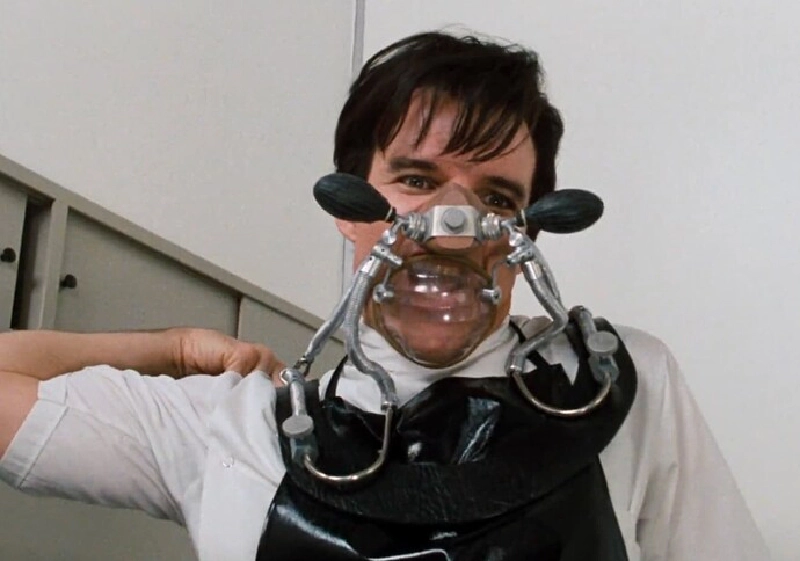
Seymour pulls a gun on him and, in the excitement, the nitrous contraption breaks, suffocating the dentist. A totally bloodless kill for Seymour!
Seymour drags the dentist’s body back to the plant shop, chops it up, (which Mr. Mushkin sees, setting up the next act), and feeds the body to Audrey 2.
Audrey is sad her boyfriend is dead, but … not really, and that means she can be with Seymour. Suddenly, Seymour is our next song, a love song.
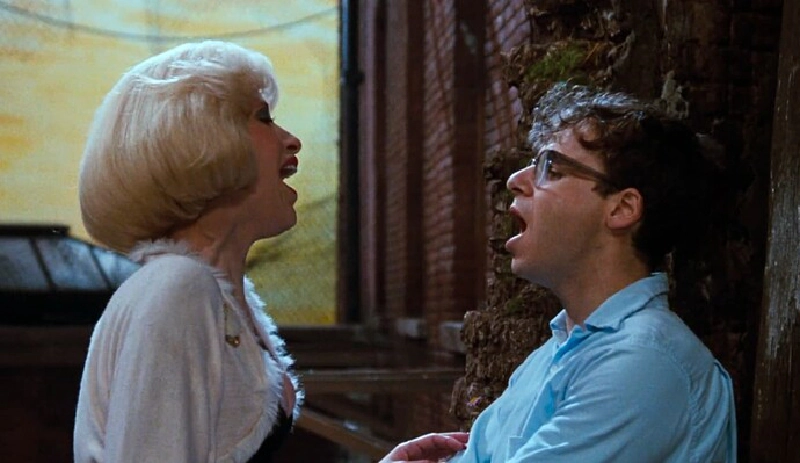
I… I know I’ve heard this song before, somewhere. It’s weird that “Suddenly, Seymour” is the most recognizable song from this musical. Is it borrowed from somewhere famous?
Mr. Mushkin confronts Seymour about his murder, and threatens to take him to the police.
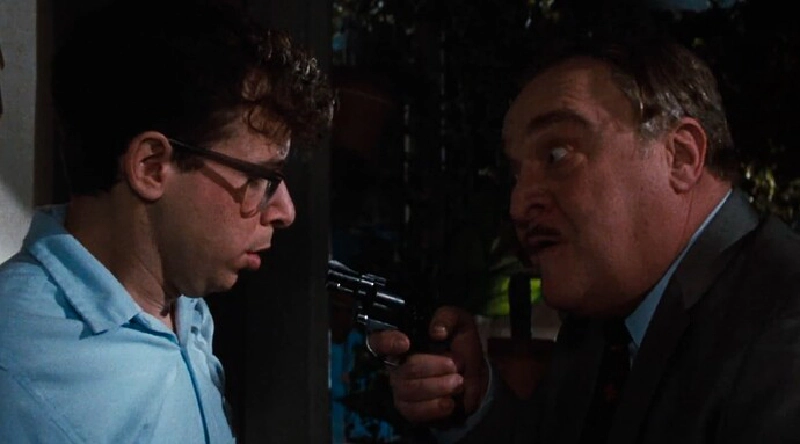
Except, critical mistake, greed takes over and he offers to let Seymour go - in exchange for Audrey II and instructions on how to care for Audrey II. In doing so, he stands a little too close to Audrey II.
wup, poosh
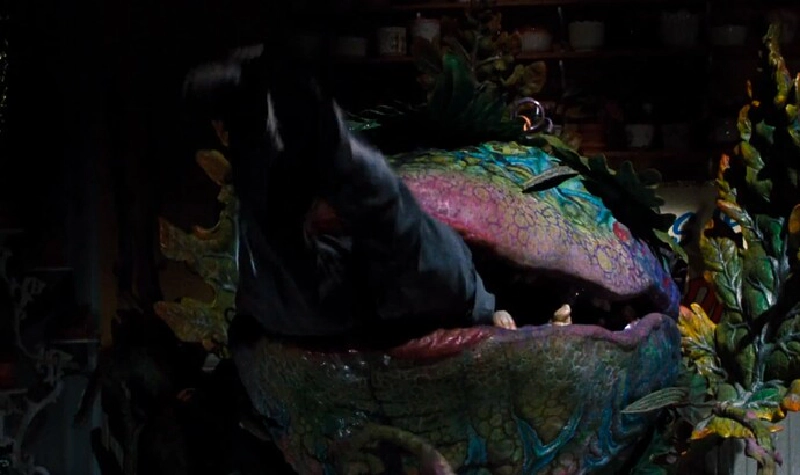
problem solved!
anyways, we get Meek Shall Inherit, cataloguing some of Seymour’s rise to fame and prominence off of the back of Audrey II
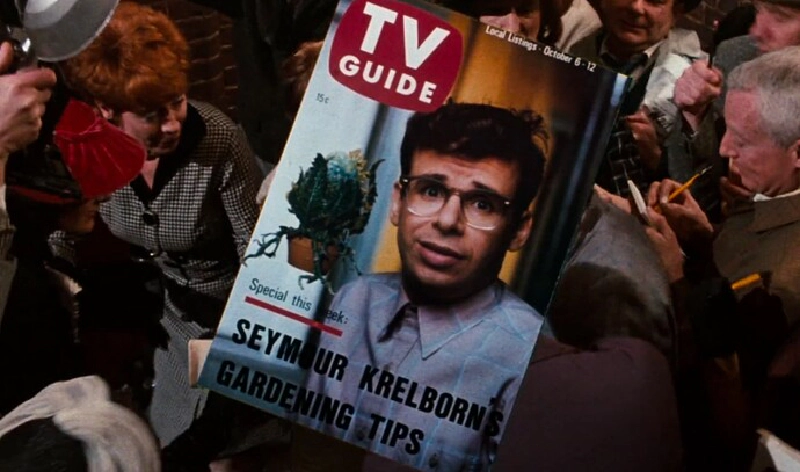
But Audrey gets hungry again, and Seymour, unwilling to fuel his fame and fortune with a campaign of ongoing human sacrifice, has a l’il freakout.
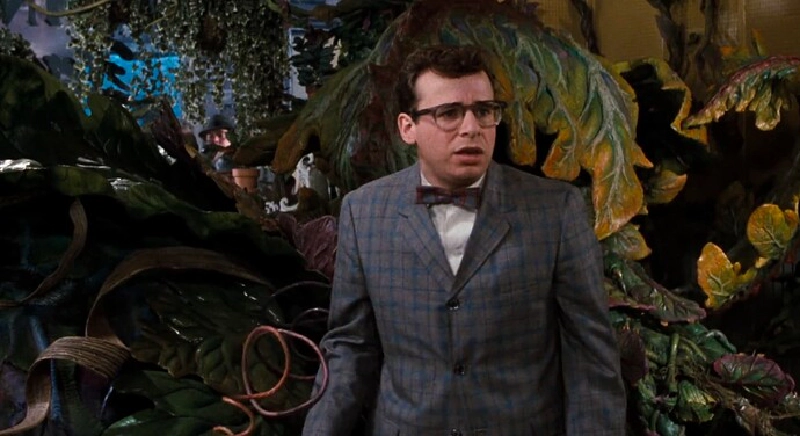
Apparently, in the original 1960s sci-fi B-movie movie that this was based on, Seymour is a little more willing to feed the plant, even tricking some local homeless people into getting ’et, but not in the musical adaptation.
Seymour asks Audrey to marry him and plans to skip town and get out of dodge entirely, which she agrees to, and then he confronts Audrey II with an ultimatum: no more corpses, and he’s just going to get ground beef.
A prop guy with a vine-shaped stick bonks the store’s telephone a bit, and Audrey II invites Audrey back to the store.

wuh oh

Seymour comes back just in time to “rescue” Audrey, but her wounds are too great, and her dying wish is to be fed to Audrey II, to continue powering Seymour’s meteoric rise to fame and fortune, with an ironic little reprise of Somewhere that’s Green.
After feeding her to Audrey II, Seymour has nothing left, only to confront one of the people trying to get rich off of his plant’s weird fame.
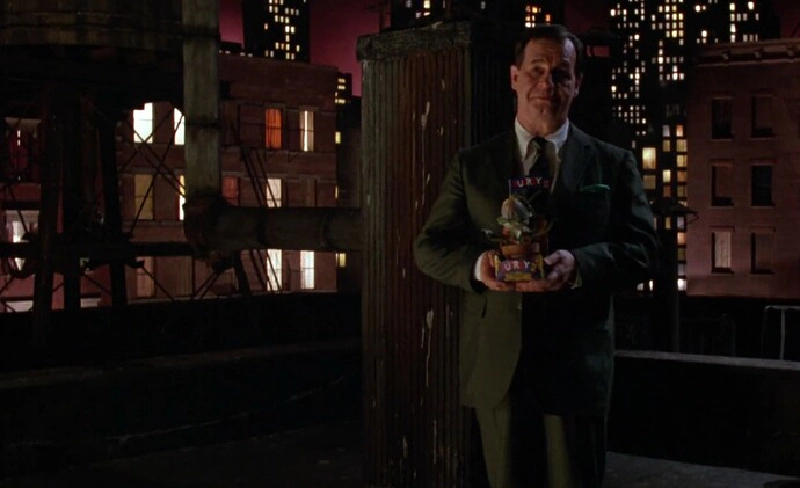
Hey, I took a cutting and got it to grow! Everyone in America is gonna have one of these!
This is too much! Finally, Seymour has had enough and he’s going to confront Audrey II!
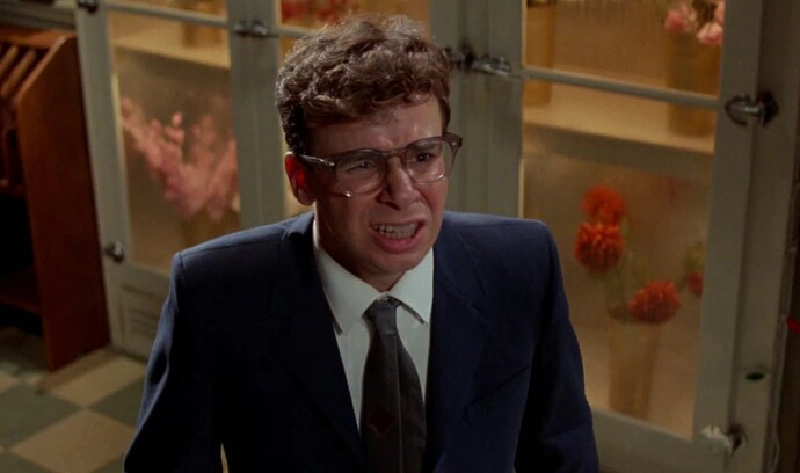
Nah, man. In the penultimate song, Mean Green Mother from Outer Space, Audrey II just brags and then eats Seymour, too.
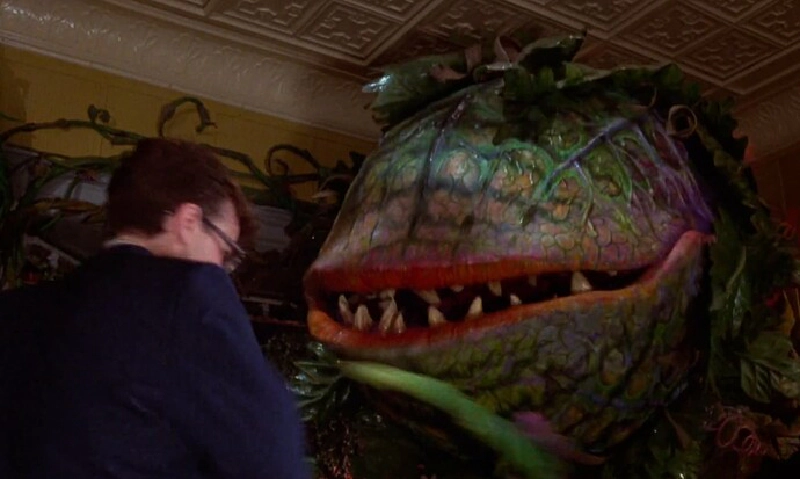
Now with a chorus of little sprouts of his own.

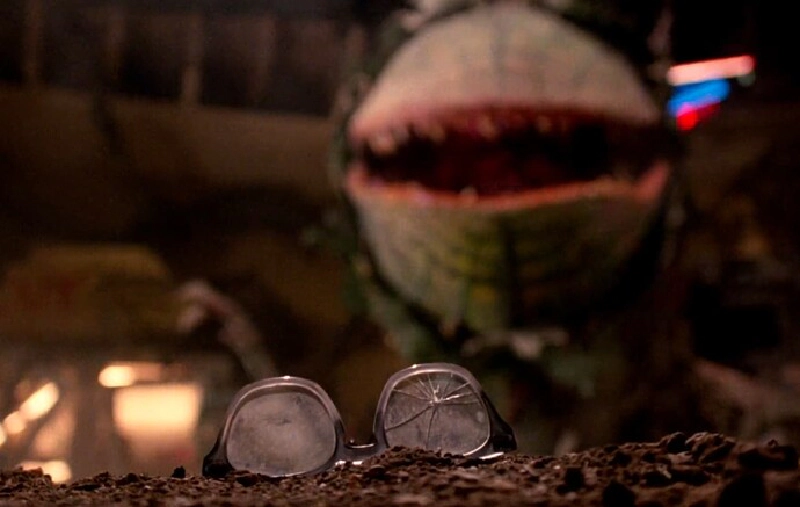
So ends Seymour.
With only the greek chorus left, they have to deliver the denouement, the final song, Don’t Feed The Plants.
Where it becomes clear that humanity did, in fact, feed the plants, lots of them, and now they’re rampaging around and eating everyone.
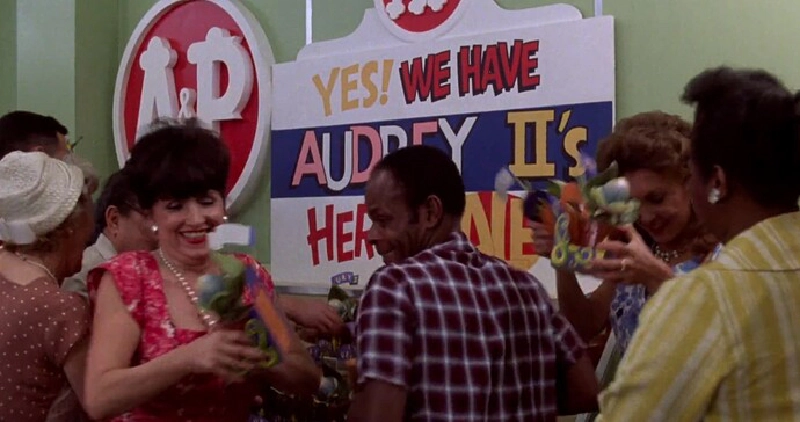
subsequent to the events you have just witnessed
similar events in cities across america
events which bore a striking resemblance
to the ones you just have seen, begin occurring
ooh
subsequent to the events you have just witnessed
unsuspecting jerks from Maine to California
made the acquaintance of a new breed of flytrap
and got sweet-talked into feeding it blood
And the whole thing ends with stop-motion carnage as big plants rampage through various cities.
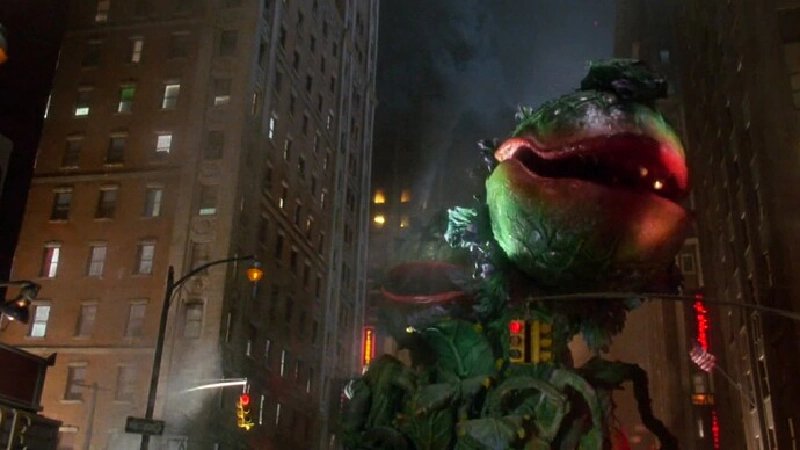
They make sure to smash this famous Harryhousen reference to let you know that they’re doing stop-motion.

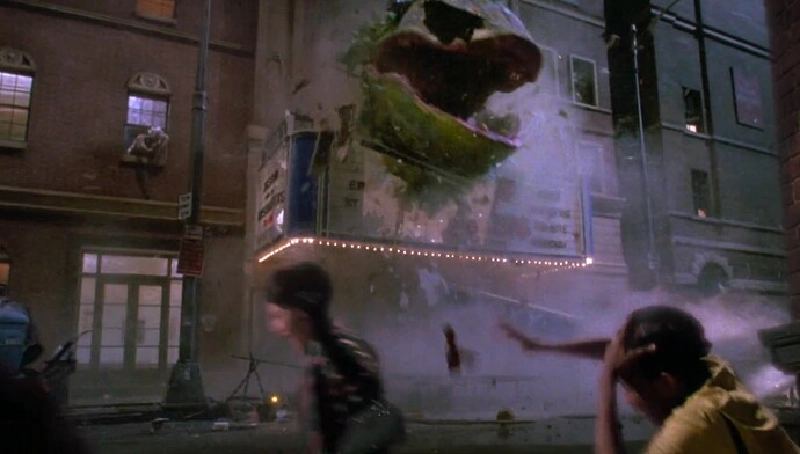
And that’s it, after about 10 minutes of the plants laughing and smashing around, the movie ends with them tearing out of the film screen to eat you, the audience.

Anyways, that was certainly better than Hello Dolly.
Oh! I’m just now learning that what I watched was not even the original ending of the movie: from 1986 through 2012 - so, for some 26 years - the original theatrical cut of the movie had a quickly put together happy ending where Seymour and Audrey live and escape to the suburbs.
Audrey’s bite is non-fatal, I guess, and she spends the rest of the third act watching from an apartment building window (because that’s easy to splice in after the fact). Seymour manages, at the last minute, to plug Audrey 2 into an 120V household outlet.
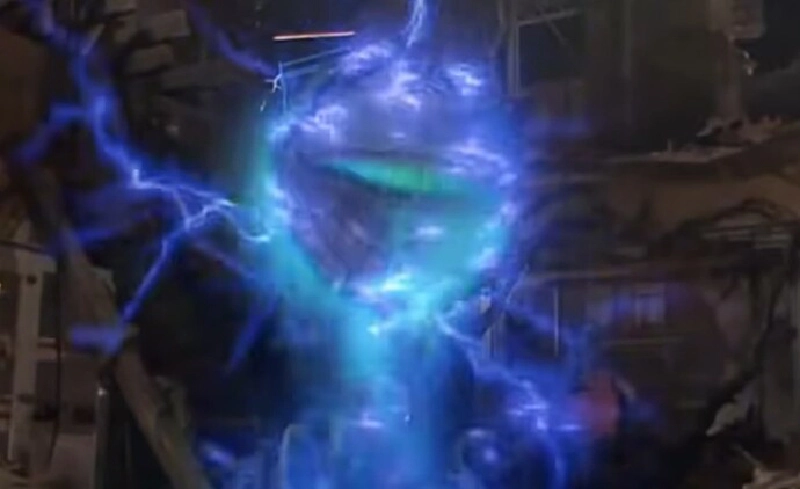
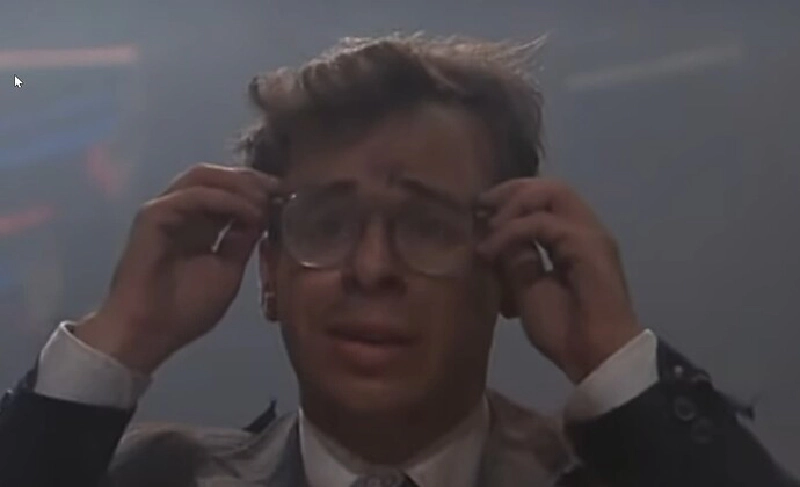
Instead of “Don’t Feed the Plants”, we get a short orchestral reprise of “Suddenly Seymour”, then “Somewhere that’s Green” as they get married and move into their tract house.

And in the garden? A little Audrey 2.
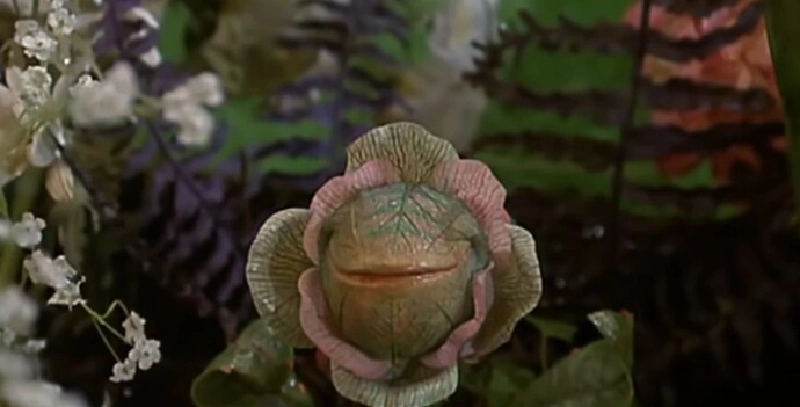
Much shorter. Happy ending.
The violent, tragic ending that I saw cost $5 million dollars to produce and was one of the most expensive sequences ever filmed in Hollywood up to that point, and it performed just terribly with test audiences.
They tried it with a few different test audiences and each time the results were the same: interest in the movie was high until Seymour gets eaten, and then the whole theatre was just stone cold shocked silence for the whole last 10 minutes.
There are a few reasons why the Bad Ending did so poorly in test screenings: partially, (in my opinion), because the film (different from both the musical and the original B-movie flick) pulls all of its punches vis-a-vis Seymour actually making bad decisions or being a bad person - the dentist and Mr. Mushkin’s villainy are both wildly amped up and their deaths are both partially their own fault. Audrey 2 basically feeds himself! Without Seymour gradually getting on board with murder, even a little carried away with murder, the tragedy doesn’t feel as earned.
The other reason - this is what Frank Oz claims - is simply that it’s a lot harder to do a sad ending in Hollywood than on Broadway, because you don’t get to see the actors come out and do a bow afterwards. They’re just dead.
They lost a lot of the masters for the original $5 million end sequence, and the one that they eventually released for the director’s cut in 2012 had to be extensively re-worked to get it back into viewing condition.
Apparently nowadays the grimmer, bloodier, weirder, more cynical “everybody dies” ending has become the more popular ending. So what I saw was the movie’s original intent, anyways!